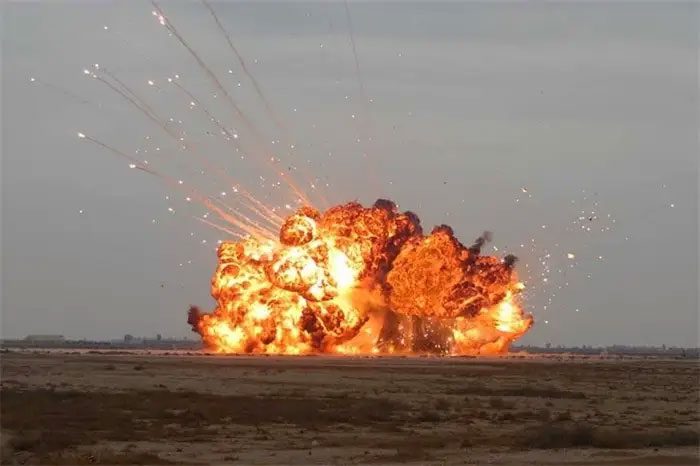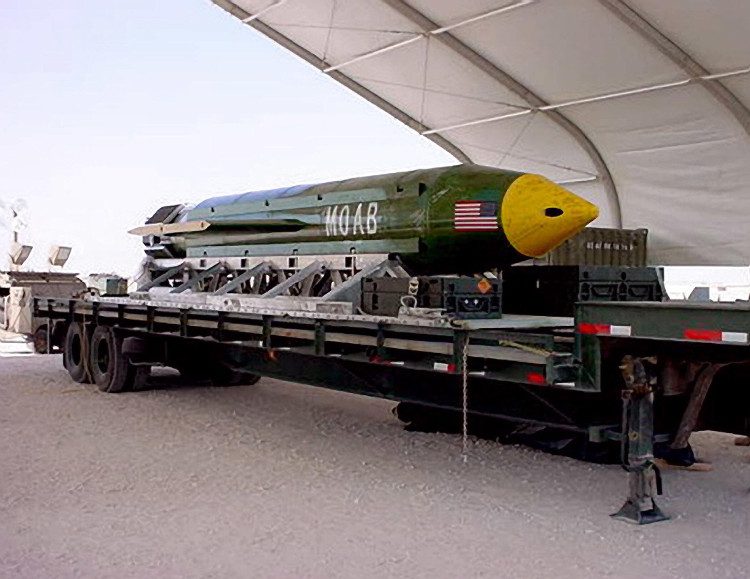Russia possesses a bomb that is four times more powerful than the non-nuclear GBU-43 bomb dropped by the United States on the Islamic State (IS) base in Afghanistan on April 13.
GBU-43 (Massive Ordnance Air Blast – MOAB, also known as the “Mother of All Bombs”) is the most powerful non-nuclear bomb ever used by the United States in combat.
However, according to NDTV, this is not the strongest bomb in the world, as the Russian military is believed to possess the “Father of All Bombs” (FOAB), which is four times stronger than the MOAB.

FOAB bomb has a wide area of destruction.
In 2007, Russia tested the FOAB – a thermobaric bomb with a destruction radius of about 300 meters (more than double that of the MOAB, which is 137 meters, and it produces double the thermal energy), with an explosive yield equivalent to nearly 44 tons of TNT. This lethal non-nuclear bomb detonates in mid-air, igniting a mixture of fuel and air, destroying structures and causing massive explosions with aftershocks. The aftermath of FOAB is so devastating that it resembles the effects of a nuclear weapon.
The FOAB’s immense explosive power is attributed to its use of thermobaric technology. This technology utilizes the surrounding air at the blast center to ignite the fuel reaction, rather than injecting oxidizers into the bomb’s fuel mixture. By not having to pack additional oxidizers, the bomb has more room to contain a larger amount of explosives, generating a super-strong, super-hot shockwave capable of vaporizing everything around the blast center.
This weapon features a two-stage detonation mechanism. A specially designed smaller warhead is activated first, dispersing flammable fuel into the air in a cloud to mix with the surrounding atmosphere. Then, a specially heavy explosive charge weighing more than 7 tons is detonated, igniting nearly all the surrounding air and creating a massive fireball along with an extremely powerful shockwave.
The shockwaves generated by a thermobaric bomb detonating in the air travel much farther than those from a conventional explosion. The combustion of air during the explosion also creates a vacuum, significantly increasing the damage and lethality.

MOAB bomb of the United States. (Photo: NDTV).
The MOAB bomb from the United States was previously considered the strongest non-nuclear weapon. It was first tested in March 2003, just days before the U.S. military entered Iraq. The U.S. Air Force reported that during that test, the bomb created a giant mushroom cloud visible from approximately 32 kilometers away.
Weighing 9,797 kg, the MOAB integrates a GPS-guided warhead. Reports indicate that the MOAB is 6 meters long and can penetrate the ground to a depth of 60 meters (or through 18 meters of concrete) before detonating.
On April 13, the U.S. dropped the GBU-43 MOAB on an IS base in the Achin district of Nangarhar province, Afghanistan, near the Pakistan border. According to the White House, the bomb targeted a network of tunnels and caves used by terrorists for movement.
“The airstrike using the GBU-43 helps minimize risks to U.S. and Afghan forces conducting operations in the area while maximizing the destruction of IS fighters and infrastructure,” stated the U.S. Central Command (CENTCOM) on Twitter.
On September 11, 2007, a Russian strategic bomber Tu-160 dropped a test version of the FAOB bomb onto a test site. “The destruction is primarily caused by supersonic shockwaves and extremely high temperatures, vaporizing all living organisms,” a report following the test evaluation stated.
General Alexander Rushkin, then Deputy Chief of Staff of the Russian military, noted that the FOAB is smaller than the MOAB (Mother of All Bombs), but it possesses greater power, as the temperature at the center of the explosion is twice that of the American bomb, achieving a destructive capacity equivalent to tactical nuclear weapons. To date, this type of bomb has never been deployed in actual combat.


















































